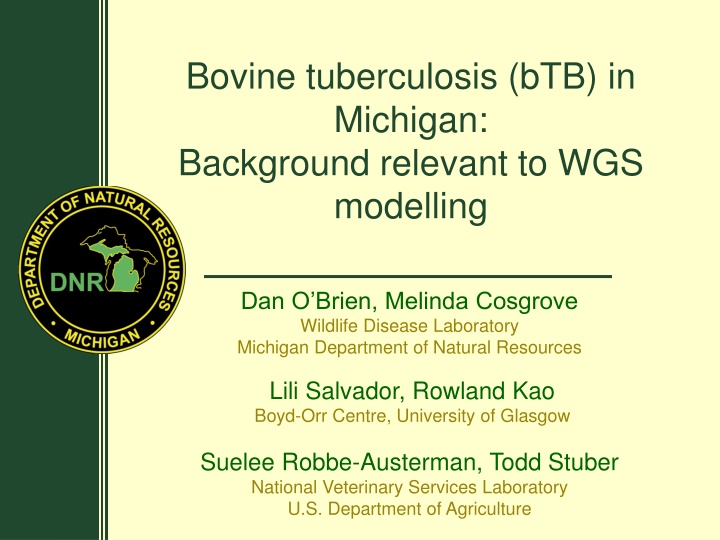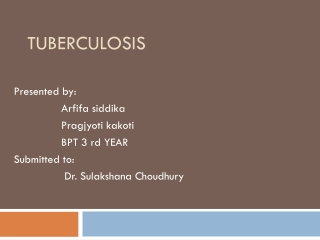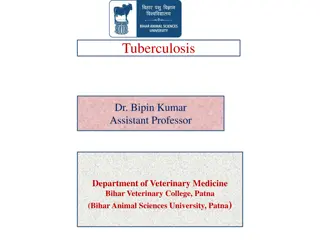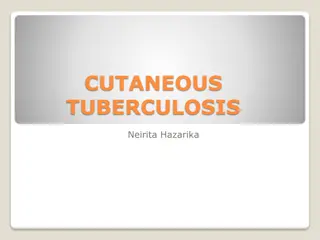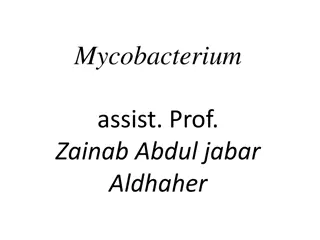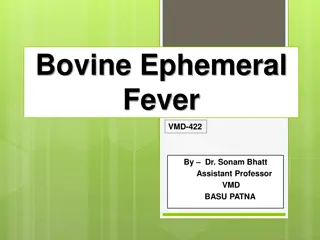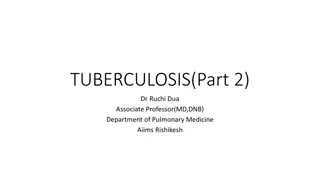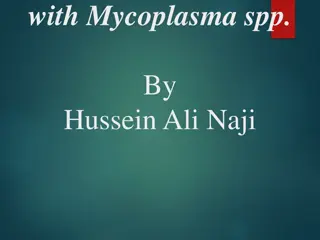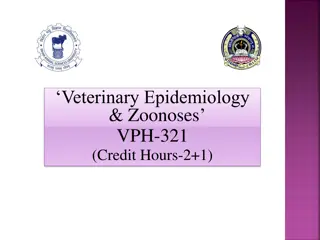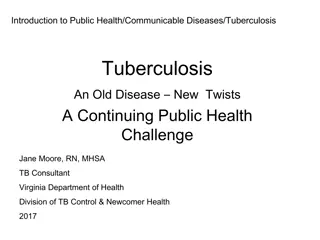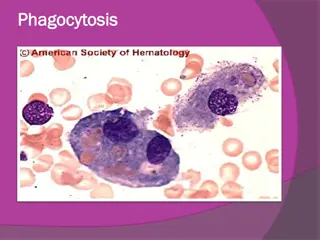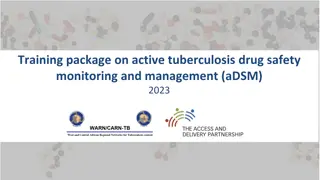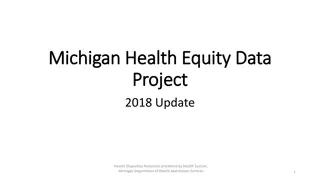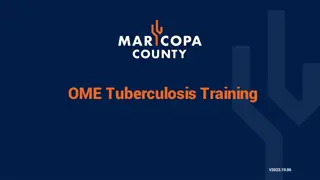Bovine Tuberculosis (bTB) in Michigan: Insights and Findings
Background information on the prevalence and zoonotic cases of bovine tuberculosis in Michigan, USA, highlighting statistics on infected livestock herds and wild deer over the years. The extent of zoonotic bTB cases and the achievable elimination of bTB from cattle are discussed, along with accreditation zones for bovine TB in specific counties. Justification for vaccination in Michigan emphasizes the significance of white-tailed deer in the ecosystem and the responsibility of maintaining healthy herds for future generations, focusing on their ecology and behavior in the endemic area.
Download Presentation

Please find below an Image/Link to download the presentation.
The content on the website is provided AS IS for your information and personal use only. It may not be sold, licensed, or shared on other websites without obtaining consent from the author.If you encounter any issues during the download, it is possible that the publisher has removed the file from their server.
You are allowed to download the files provided on this website for personal or commercial use, subject to the condition that they are used lawfully. All files are the property of their respective owners.
The content on the website is provided AS IS for your information and personal use only. It may not be sold, licensed, or shared on other websites without obtaining consent from the author.
E N D
Presentation Transcript
Bovine tuberculosis (bTB) in Michigan: Background relevant to WGS modelling Dan O Brien, Melinda Cosgrove Wildlife Disease Laboratory Michigan Department of Natural Resources Lili Salvador, Rowland Kao Boyd-Orr Centre, University of Glasgow Suelee Robbe-Austerman, Todd Stuber National Veterinary Services Laboratory U.S. Department of Agriculture
Summary, bTB infected livestock herds and wild deer, 1975-2017 69 infected cattle herds 54 (78%) beef, 15 (22%) dairies 8 (12%) infected twice 68 Michigan genotype; 1 No. Amer. captive elk genotype 5 infected feedlots (traceouts from infected herds; don t officially count as infected herds ) 4 infected farmed deer herds (2 remain infected, under quarantine, as no $$ to indemnify) 1 infected farmed bison herd Wild deer: 823 positive of 230,322 tested
bTB in Michigan, USA: Extent of zoonotic bTB Only two known zoonotic cases to date of bTB of MI deer/cattle strain 1. Opportunistically diagnosed in aged male lung cancer patient, 2002 2. Self-inoculated case in deer hunter, 2004 While other undiagnosed cases may exist, no evidence that zoonotic transmission is substantial Wilkins et al. 2008. Emerg. Infect. Dis. 14(4):657-660.
DSK269 62 bTB in Michigan, USA: Livestock Elimination of bTB from cattle achievable Mean 3.7 breakdowns (range: 1-8, var: 2.2) per year 1998 to 2015 1 infected animal per herd is the norm (as detected by current diagnostics) All MI cattle are now theoretically traceable (unique electronic identification statewide, although circumvented by producers) Gort zar et al., 2015. Mamm. Rev. 45:160-175.
Bovine TB Accreditation Zones Alcona, Alpena, Montmorency and Oscoda counties 340 commercial herds + 73 freezer beef herds
bTB in Michigan, Justification for vaccination in MI: USA: White-tailed deer (WTD) Photo: D. Kenyon, MDNR Not driven by effects of disease Deer are abundant across Michigan (1.7-2 million population) bTB-associated mortality is minimal Of economic & cultural, rather than conservation, significance Principle argument is responsibility for leaving a healthy herd for sustained use of future generations
bTB in Michigan, USA: WTD ecology Not territorial Does (females) and their female offspring exhibit remarkable fidelity to natal range In the bTB endemic area, most does are bred as yearlings; half give birth to twins Does typically twin annually from age 2 on Doe groups, if infected, likely maintain bTB locally
bTB in Michigan, USA: WTD ecology Bucks (males) likely responsible for between group transmission Transmission (largely) density-dependent Estimated hunter harvest rates for the core bTB outbreak area: 40% of buck population/year 16% of the antlerless (does & fawns) population/year ~40% (range: 31-49%) of the annual harvest 2001- 2011 composed of animals 1.5 years old Annual mean harvest: ~5400 from population of ~25,000-30,000
Republic of Ireland and Northern Ireland Area = 84,712 sq. km 0 100 200 Kilometers Lower Peninsula of Michigan Area = 106,976 sq. km
Republic of Ireland and Northern Ireland Area = 84,712 sq. km Counties Antrim, Armagh and Tyrone Area = 7,734 sq. km 0 100 200 Kilometers 0 50 100 Kilometers Lower Peninsula of Michigan 5-County TB Area Area = 106,976 sq. km Area = 8,047 sq. km
Republic of Ireland and Northern Ireland Area = 84,712 sq. km Counties Antrim, Armagh and Tyrone Area = 7,734 sq. km County Armagh Area = 1,320 sq. km Armagh 0 100 200 Kilometers 0 50 100 Kilometers 0 10 20 Kilometers DMU 452 Lower Peninsula of Michigan 5-County TB Area DMU 452 Area = 106,976 sq. km Area = 8,047 sq. km Area = 1,480 sq. km
bTB in Michigan, USA: Geographic scale bTB positive deer and cattle farms by area, 1975-2014 Area bTB+ white-tailed deer bTB+ cattle farms DMU 452 579/27,476 2.1% 16/88 18% Rest of endemic area 143/53,010 0.27% 24/585 4.1% Rest of Michigan 22/120,759 0.018% 13/~12,953* 0.1% *USDA-NASS, 2007. Census of Agriculture, State Data, MI, 19.
bTB in Michigan, USA: Geographic scale
bTB in Michigan, USA: Scale of deer testing (2009-2014)
Michigan M. bovis isolates to 6/2017 Species Sequenced w/complete metadata 613 16 209 5 7 3 18 2 8 3 884 Pending WGS but no/ incomplete metadata 47 0 0 0 0 0 0 0 0 0 47 Total Wild deer Captive deer Cattle Elk Black bear Bobcat Coyote Opossum Raccoon Red fox Total 0 0 Ongoing 0 0 0 0 0 0 0 ? 660 16 209+ 5 7 3 18 2 8 3 931
Metadata for WGSs All wildlife tested: Species; age; sex; method, location (to scale of 1 mi2) and date of collection; specimen(s) submitted bTB+ wildlife: presence/location of gross lesions; histopathology; acid-fast staining; culture Copious statewide denominator data: >229,000 bTB-negative deer, >3,600 bTB-negative elk bTB+ cattle (data known to be collected; may or may not be accessible): location; beef or dairy; screening (CF) and confirmatory (CCT or - interferon) tests; presence/location of lesions; histopathology; acid-fast staining; PCR; culture
Photo: E. Carlson Many thanks. Dan O Brien, Wildlife Disease Laboratory, MDNR (517) 336-5035 obriend@michigan.gov
